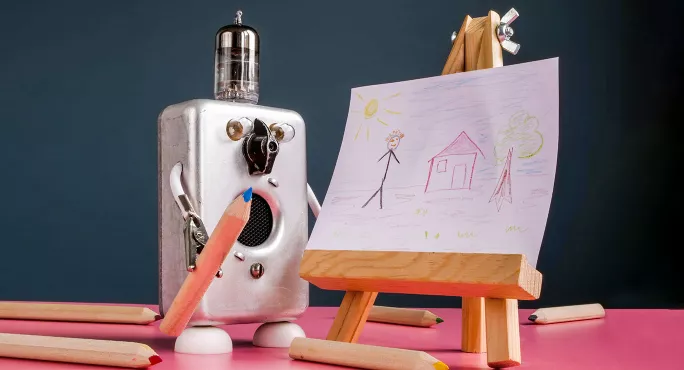Artificial intelligence (AI) may not solve all our workload problems, but it has the potential to be a real timesaver in some areas. I also find that this, in turn, can free up my mental bandwidth, allowing more time to focus on other things.
It is, of course, important to acknowledge that there are concerns around AI and education that will have to be addressed, while exploring AI’s potential to complement the skills and expertise of a teacher.
We also clearly need check on the quality of what AI presents - and not forget about other ways generating or getting resources - but here are 10 ways I have found that AI has helped me as a primary teacher:
1. Spelling
AI can save you a lot of time with spelling planning. For example, if you type into an AI bot, “give me eight long words with ‘oi’”, it generates a list within seconds that can be easily copied and pasted. Differentiation is also easy: simply type “give me eight four-letter words with ‘oi’” and, again, another list is generated in seconds.
2. Writing
Time can be shaved off writing lessons. You can ask an AI bot for “six persuasive sentence openers” or “give me six good connective words for 12-year-olds to use in writing”.
3. PE
A simple AI app can be used for planning PE lessons. This is particularly useful for a sport you are less familiar with, or for student teachers. If you type in “give me a lesson plan for tennis for children”, the app will write a detailed plan complete with warm-up games, timings and suggestions of what skills to teach and how.
4. Art
Believe it or not, a simple AI app can plan an art lesson for you. Typing “give me a plan for a children’s art lesson on texture” generates an art lesson detailing materials needed, discussions to have with the children, the main activity, extension activities and a plenary.
5. Maths
AI allows fast planning of differentiated maths questions. For example, you can ask the app for 10 maths questions about three-digit by two-digit multiplication, and it will quickly generate lists of questions and answers.
6. Images
Images can be generated with a simple AI app. These can be fun to use for creative writing prompts. For example, you could ask the app to generate an image of a haunted house with bats flying around. Or, involve the children by asking them to come up with a scene they would like to write about and let them see the different images that their descriptions create.
7. Science
Science lesson plans can be quickly generated with AI by asking for, say, a plan for a children’s science lesson on solubility. Again, full instructions are generated, complete with materials, discussions to have and plenaries, which you can then look to adapt to the needs of your class.
8. Emotional literacy
AI has the potential to help explore emotional literacy by, for example, creating images of people displaying different emotions to discuss with children. How is the person in the image feeling? How do we know?
9. Wellbeing
AI can be used as a wellbeing tool. You can ask an app to “write a winter-themed guided meditation for children that will last for five minutes” and it could indeed write you a lovely guided meditation.
10. Proofreading
Ultimately, even though there are undoubtedly legitimate concerns about its impact on education, teachers should not fear this new technology; yes, they should take care with it, but that applies to all types of resources and technology. There are many ways that AI can be used to save time and enhance creativity in our classrooms. I might even have used AI to proofread this article for me!
Gemma Clark is a primary teacher based in Scotland. She tweets @Gemma_clark14





